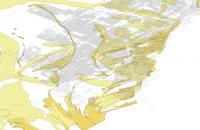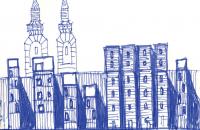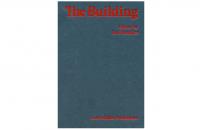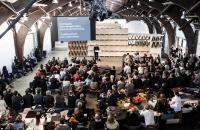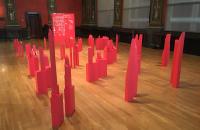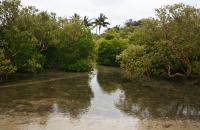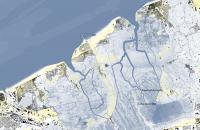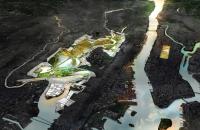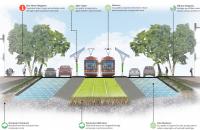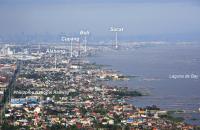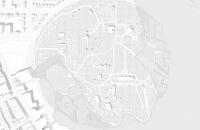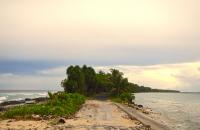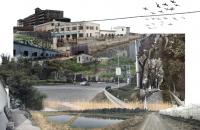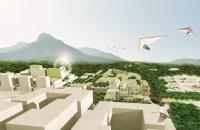Professor in Residence, Department of Architecture, GSD, Harvard University, Cambridge MA, USA
Pouillon’s Practical Theory. A Design Method for Contemporary Architectural Practice
VOLUME 3/2018 - Issue 1 , Pages: 47 - 68 published: 2018-07-07The aim of this paper is to underline the currency and modernity of Fernand Pouillon’s method for contemporary architectural practices. In particular, this dissertation analyzes the theory hidden behind Pouillon’s practice, and the motivation influencing the final quality of his works in order to make this method implementable to the current conditions of architectural design related to the management of complexity, buildability and quality of buildings. This paper explains Pouillon’s design process through the case study of Résidence Les 200 Logements, or dwellings, built in Aix-en-Provence between 1951 and 1955. This work represents the turning point experience in the development of a design methodology that Pouillon will use for the following twenty years of his career. The 200 Logements project demonstrates the absolute effectiveness of this design method to achieve a certain quality in all the production phases. By merging technological and humanistic culture, the buildings designed by Pouillon exemplify the possibility of making theory through practice. Intended as “practical theories,” the models and the approaches proposed by Pouillon represent a design method that can still be used today.
Cities as Hydro-Geologic Terrain: Design Research to Transform Urban Surfaces
VOLUME 3/2018 - Issue 1 , Pages: 165 - 190 published: 2018-07-02Imperviousness is a significant design problem for the future of cities: we must reduce it, redesign it, transform it. This paper argues to insert hydro-terrain thinking to the paved surfaces of cities, instantiating the concept of “rain terrain” that links hydrologic performance across scales, from the raindrop to the region. The City of Chicago is the case study where high concentrations of pavement drain stormwater from the city - resulting in flooding, overflowing and polluting - from the Great Lakes to the Gulf of Mexico. I first share research on the glaciated history of the region, to reveal sandy soil types located in the urban area. I then correlate imperviousness, permeable soils and flooding prevalence to identify a pattern of site opportunity areas in the city. I also propose design practices - through disruptions, interventions and reconfigurations of urban surface - to tap paved-over soils as the basis for a landscape-based urban stormwater approach. In doing so, this paper aims to present a vision for urban transformation, based on specific technical design opportunities within landscape-as-infrastructure.
Chicago’s Urban Rivers
VOLUME 3/2018 - Issue 1 , Pages: 141 - 164 published: 2018-07-02Chicago, like other major cities, traces its growth back to a connection with water. As the city grew, the river became the backbone of commerce and economic prosperity. However, this thriving resource was not always looked upon with a sense of stewardship and care. In the wake of post-industrialization, much of the manufacturing had moved from the banks of the Chicago River, leaving behind disconnected communities and a polluted riverbed. For nearly two decades, Ross Barney Architects has been working along Chicago’s rivers. These efforts include the design of the Chicago Riverwalk, studies on all 150 mi. [241 km] of riverfront across the city, and an exhibition at the Chicago Architecture Biennial. The goal was to reconnect people with the dynamic and changing life of the river.
Berlin Fragments. A Heterography of an Architectural Form
VOLUME 3/2018 - Issue 1 , Pages: 23 - 45 published: 2018-06-25Architectural form lives a number of mysterious lives that are characterized by different yet simultaneous temporalities. It has been said that a “secret date” exists between the modern and the archaic, not so much because the modern is fascinated by the archaic but because “the key to understanding the modern is hidden somewhere beneath the timeless and the pre-historical.” The mystery surrounding the intellectual sources in the architect’s work arguably lies in the multifaceted (aesthetic, sociological, political, spatial) relationships it establishes with a multitude of friends - be they artists, poets, or architects - who are responsible for his development and keep feeding his practice, even if long dead.
Modular House. Coastal Typological Prototype
VOLUME 3/2018 - Issue 1 , Pages: 69 - 90 published: 2018-06-25Climate change requires new approaches to coastal settlements at all scales. The architectural community must respond with solutions not only at the urban scale, but also at the scale of the single-family home, long an integral component of the American dream. The single-family typology has been critical to the exploration of architectural ideas and basic societal needs. With shifting coastlines and rising waters, the relationship between built-form and landscape must adapt without losing the important connection between the building and its site. Equally importantly, the transformation of this building type must be broadly available to communities with a wide range of economic resources. Our firm seeks to meet this need through the use of modular construction with thoughtfully restrained site work that limits the short-term impact on the environment, while providing long-term solutions necessary for acclimating to this changing world.
The Headquarters of Métropole Rouen Normandie
VOLUME 3/2018 - Issue 1 , Pages: 7 - 22 published: 2018-04-11The main idea behind the Métropole Rouen Normandie headquarters project by Jacques Ferrier Architecture was to unite all the “energy” that is found in this port site in France. While taking inspiration from the paintings of Claude Monet, especially of the Rouen Cathedral, the façades of the building were designed to be able to constantly change color depending on day, season, and time. The design is aimed at maximum efficiency and comfort of the offices inside. An innovative and exemplary building that is also easy and intuitive to navigate.
Exaltation of Apartness? "The Building"
VOLUME 3/2018 - Issue 1 , Pages: 209 - 217 published: 2018-04-11
Little Boxes and Big Boxes. On Donald Judd’s "Obdurate Space"
VOLUME 3/2018 - Issue 1 , Pages: 233 - 240 published: 2018-02-21The Danish Way. The Rising Architecture Week 2017 in Aarhus
VOLUME 3/2018 - Issue 1 , Pages: 241 - 257 published: 2017-11-12The Rising/Architecture Week 2017 was held in Aarhus as part of the Aarhus European Capital of Culture 2017 initiatives. The array of conversations, debates, and exchange of ideas generated at Rising 2017 proved once more the vitality and the maturity of Danish design culture.
Rooted on a strong Modernist tradition, Danish design culture weaves a savvy mix of promoting and further sharpening its brand, as well as of stimulating thoughtful reflections on relevant disciplinary and societal issues. The conference was intelligently used as vehicle to showcase the good work that is being produced not just in Copenhagen but across Central Denmark and to bring in a diverse pool of international designers, planners, critics, and thinkers. What can be called the Danish Way to design culture offers the opportunity “to rise,” above the conventional and the predictable, for an exciting view over a possible better world.
Make New Critical Stories. A View on the 2017 Chicago Architecture Biennial
VOLUME 3/2018 - Issue 1 , Pages: 219 - 231 published: 2017-10-13The 2017 edition of the Chicago Architecture Biennial, Make New History, like any other similar event, has caused debate and controversy. Beyond inevitable flaws and shortcomings, the CAB though deserves to be appreciated for the quality of most of the exhibited projects, works or installations, some of which managed also to offer what was missing in this CAB’s main theme: a critical perspective. The theme itself of the CAB is challenged, but the good works of many international architects and artists, well selected by the Artistic Directors Sharon Johnston and Mark Lee, is appreciated for their contributions to a critical discourse in our field, for their “critical stories.” Through a discussion of the curators’ hypothesis and of some of the most interesting works, as well as of some critical contributions included in the exhibition catalog, this review tries to offer a critical assessment for an event that, fortunately, has already acquired an outstanding position within the architecture cultural landscape of our time.
The Resilient Metamorphosis of Cities
VOLUME 2/2017 - Issue 2 [RESILIENT EDGES], Pages: 161 - 165 published: 2018-02-08Waterscapes in Transformation: The Case of the Belgian Coastal Area
VOLUME 2/2017 - Issue 2 [RESILIENT EDGES], Pages: 743 - 766 published: 2018-02-05The socio-economic impact of nature in Belgian coastal landscapes on a regional scale is high due to their general attractiveness for visitors, their strongly developed tertiary service economy and other related sectors (tourism, residential, agriculture…). Due to climate changes however, these coastal landscapes and their required accessibility and continuous character are threatened by the unavoidable planned infrastructures (dikes, new connections, floodable areas, etc.) that will generate ruptures, frictions and additional transition spaces within the landscape. Flanders urgently needs to unfold policies and strategies to avoid or reduce the undesirable effects of the expected changes. Influential changes for the coastal zone will be sea level rising, increasing temperature, changing rainfall patterns, floods, fragmented ecological system, salinization, and reduced drainage capabilities to sea. A thoughtful planning policy forms the necessary key to a sustainable development. Policies and plans lead to the formulation of spatial proposals for mitigation and adaptation, to be executed by major infrastructural works planned for the next decades. Most of these infrastructures, conceived at a large scale, generate a different model of accessibility for the Flemish Coastal landscape.
Climate Change Adaptations for Coastal Farms: Bridging Science and Mātauranga Māori with Art and Design
VOLUME 2/2017 - Issue 2 [RESILIENT EDGES], Pages: 497 - 518 published: 2018-02-06Indigenous coastal farming communities need to address future climate change impacts, yet many communities are slow to respond, due to lack of adequate information, economic pressures, the abstract nature of climate change science and poor communication between what science knows and what indigenous farming communities need to know. Art and design can address these issues by synthesizing broad scientific principles with local place-specific culture and their visual language can effectively communicate short and long-term benefits to local communities. Art and design are thus both generative research methods and media for representation. This research uses art and design to provide a bridge between the Māori culture of a local farming community in coastal New Zealand and climate change science. It provides a framework of strategies for new farm practices. Underpinned by the qualitative awareness of thresholds and an open-ended toolbox of land-based strategies, the role of the framework is to catalyze adaptation. The framework is responsive to both the Māori worldview and scientific knowledge, and has the potential to provide a model for other coastal communities.
Challenges of Disaster Relief Housing: Evaluating Coastal Domestic Typologies in Eastern Sri Lanka
VOLUME 2/2017 - Issue 2 [RESILIENT EDGES], Pages: 601 - 628 published: 2018-02-06In the aftermath of the December 2004 tsunami, an unprecedented natural disaster that disproportionately affected the impoverished and conflict-ridden eastern coast of Sri Lanka, the outpouring of disaster relief and support for housing reconstruction was primarily led by international aid organizations for the erection of capital-intensive dwellings to allow for immediate habitation. Three case studies representative of significant housing typologies deployed since the tsunami are investigated: two global prototypes sponsored by foreign aid, and one informal, vernacular construction. We argue that in Sri Lanka the aid-housing-as-commodity paradigm - which in its specificity and immutability disregards the robust tradition of integration between natural and built environments and between individual and community - represents an increasingly and unsustainably risky expenditure of capital resources due to the likelihood of more frequent disasters in coastal zones. We argue for a shift toward spatial frameworks, not static prototypes, which take into account that the longer temporal dimension of rebuilding community and housing after a natural disaster is not necessarily synonymous with expensive, structurally robust building practice.
Salinas: Interstices of the Urban, Cultural and Political Processes in Mediterranean Ecologies
VOLUME 2/2017 - Issue 2 [RESILIENT EDGES], Pages: 707 - 719 published: 2018-02-06Salinas, or Mediterranean coastal salt marshes, are priceless ecological wetlands, resilient spaces along the coast that have survived over time and hold incalculable cultural, historical, and ethnographic values associated with them. Today, artisanal sea salt production is no longer a profitable business, and in many cases, these spaces become a no-man’s-land in-between nature and city, falling victims to pressures of changing land uses and the unsustainable urban growth of the Mediterranean coastal tourism. However, the process of change and abandonment of these former production landscapes presents an opportunity to promote new formulas for spatial tactics, public use and new sustainable futures. A liminal condition full of spatial and formal assets that opens the rising potential of the local economy and the right of the salina’s active exploitation, interaction and identification.
Fragile Edges and Floating Strategies along the Albanian Coastline
VOLUME 2/2017 - Issue 2 [RESILIENT EDGES], Pages: 685 - 705 published: 2018-02-06The essay investigates coastline development along the southern area of the Albanian Riviera, introducing the concepts of “landscape fragments” and “landscape within a landscape” as design methodologies. By speculatively reversing the order of landscape perception from land to water, the coastline becomes a flexible device capable of responding to unpredictable future events - natural disasters related to climate change (rising sea levels), or globally challenging socio-political phenomena (such as mass migration growing in scope, complexity and impact). The experimental design approach involves the design and representation of an incremental waterscape. By reversing the morphological perception of the coastal landscape and making a set of tactical selections in natural and artificial landscapes, the students highlighted the territory’s potential. With new awareness, they proposed site-specific interventions along the coast and inland, re-territorializing the “apparent tabula rasa” and demonstrating the coastline’s potential dynamic reaction to environmental challenges.
Mangroves of Maputo, Mozambique: from Threatened to Thriving?
VOLUME 2/2017 - Issue 2 [RESILIENT EDGES], Pages: 629 - 641 published: 2018-02-06Coastal wetlands worldwide are among the most productive yet highly threatened systems in the world, and are framed and protected by the Convention on Wetlands (Ramsar, Iran, 1971), of which Mozambique is a party since 2004 (IUCN, 1971). Maputo city coastline consists of an ample alluvial plane, where large extensions of mangrove forests occur within the city, namely the Costa do Sol wetlands, offering a wide range of ecological and economical services. Here, urban development pressure is increasing and rapidly changing dynamics are creating new urban settings, pressing in ecological sensitive areas of Maputo’s coastline. The functions of the still existing ecosystems and positive effects that these can have within the urban environment are relevant to be known and investigated in light of the greenway principles. Through the landscape architecture lens, insights on the service capacity of these mangroves in terms of conservation strategies, local perception, usage and management, and design possibilities are added, which can contribute to maintain and expand the high urban quality that is historically attached to Maputo city.
Between Land and Sea: Reshaping the Belgian Coastline A Case Study between Ostend and Blankenberge
VOLUME 2/2017 - Issue 2 [RESILIENT EDGES], Pages: 721 - 741 published: 2018-02-06Over time, the Belgian coast has developed into a hard-engineered straight defence line - from the sea inwards - of flat beaches, dykes and a storm wall that is reaching its capacity limits. New plans are being developed in some parts of the coast aiming to raise the storm walls up to “acceptable” levels, based on climate change and sea level rise predictions. This follows the trends of raising river protection walls, but continuously insists on the linear urban structure of the coastline: beaches, dyke, urbanization wall on the dunes and housing proliferation into the back polders. These are often low-quality holiday houses built for the summer season rush. This essay investigates an alternative future for the Belgian coast through research-by-design. The design exploration proposes to seize the opportunity of the increased peril, predicted from climate change and subsequent sea level rise. Furthermore, it proposes a shift from hard to soft engineering and a dynamic tidal landscape within which the tourism economy is reinvented.
“Polyvalent Adaptation”: Design in a Temporal Context of Uncertain High-Risk Futures
VOLUME 2/2017 - Issue 2 [RESILIENT EDGES], Pages: 185 - 209 published: 2017-12-21If greenhouse gas emissions ceased today, sea levels will continue to rise for centuries due to the time scale of climate change. This demands a fundamental shift from solely mitigating impacts to adapting to this new reality. Architects can play a key role but are often restrained by outmoded disciplinary norms, and financial and regulatory limitations.
What we require is a new design paradigm that extends beyond site-specific needs and draws on the context of our high-risk future. “Polyvalent Adaptation” could significantly impact the profession and the future of our communities. This approach combines two concepts that are not new to architecture or to discussions surrounding sustainability and climate change, but, when married, amplify each others’ potential. Combining the temporal concepts of polyvalence and adaptation provides a new lens for tackling the conflict between the permanence of the built environment and the changing climate. From this perspective, projects can be designed and constructed to meet current needs, to provide projective agency capable of assisting in the aftermath of extreme weather, and to become support infrastructures for new settlement patterns.
(Geo)Design Coastal Cities: Design with Data (and Nature too)
VOLUME 2/2017 - Issue 2 [RESILIENT EDGES], Pages: 337 - 366 published: 2017-12-20The geography of a coastal city, such as its native geological, biological, and physical conditions, plays an important role in understanding the impacts of climate change upon the area. To better identify strategies for adaption to global climate change, planners and designers need better tools and techniques to learn and analyze the geographical context of their cities on coastlines worldwide. This article describes an urban design studio conducted in the spring of 2014. Students in this class explored the future of North Carolina coastal cities in light of rising global sea level. Geodesign using GIS and other visualization tools enabled the students to focus on urban morphology, development patterns, and environmental characteristics of the city in order to identify new interventions that can support a new set of relationships between urbanity and nature.
Resilient Edges: Exploring a Socio-Ecological Urban Design Approach in Metro Manila
VOLUME 2/2017 - Issue 2 [RESILIENT EDGES], Pages: 519 - 561 published: 2017-12-21With the notable uptick of natural disasters impacting densely-populated areas, attention to the subject of urban resilience has increased among ecologists, economists, engineers, social scientists, and designers. But despite an extraordinary cross-disciplinary interest in a single subject, the urban resilience discourse has remained largely siloed by discipline. This essay builds on concepts of resilience from ecology and social science and positions urban design (in itself at the intersection of architecture, planning, and landscape architecture) as uniquely situated for integrating and operationalizing various concepts of urban resilience. The authors propose a socio-ecological urban design approach that bridges natural, human, and spatial systems and is empirically grounded in historical research, field observations, and interviews with informal settler families (ISFs) living along the shoreline of Laguna de Bay in Metro Manila. The findings revealed that while many were affected by regular flooding and issues of housing security, these were not necessarily deciding factors when determining where to live. In response to programs which emphasize out-of-city relocation, authors developed three principles of urban resilience that instead spatially integrate formal and informal communities.
Other Than Infrastructure: Leaving Room for the Fantastical in the Resilient Project
VOLUME 2/2017 - Issue 2 [RESILIENT EDGES], Pages: 167 - 184 published: 2017-12-21The manuscript reflects on the delightful and absurd qualities that might be harbored in routine infrastructures. Through a series of contemporary and historical examples the paper highlights how experience, material quality, narrative, and civic engagement can unlock new potentials in the mundane, and often intangible systems, which are intended to protect and serve those in flood prone territories. Understanding first that resilient water-management infrastructures exist along a spectrum of defense, and second that they each participate in their own extensive system of flows and processes, generates a set of opportunities for designers to interject and draw out new possibilities. Locating projects within these systems calls for two approaches:
1. identifying the “objecthood” of infrastructure; and 2. techniques for “unblackboxing” or bringing parts of now hidden systems to the foreground of the civic realm. The paper suggests that these two approaches aid in locating the whimsical within systems and offer calculated ways to confront flood mitigation methods that all too often privilege what is deemed as efficient over what is enjoyable.
Interrupted Atolls: Riskscapes and Edge Imaginaries in Tuvalu
VOLUME 2/2017 - Issue 2 [RESILIENT EDGES], Pages: 287 - 321 published: 2017-12-20Climate change puts the edge between land and sea in sharp relief; sea level rise is essentially a condition of drifting littoral edges.As rising seas threaten to encroach on land-based territories, cities and nations have responded by attempting to fix the edge at a moment in time, blocking the sea’s insidious creep. Atolls formed by coral reefs are mobile, living geographies, which resist attempts to harden their perimeter through structures such as seawalls. We explore how ideas and imaginaries associated with the “edge” between sea and land in the atoll-nation of Tuvalu illustrate competing “riskscapes” and objectives associated with the actors involved. This essay explores this interplay between politics, aid, technocratic solutions, media representations, global aspirations, local ambitions, and climate risk in Tuvalu through an examination of past/future seawalls and other proposals (realized and unrealized) for controlling atoll edges. Through the cases, we seek to re-politicize the edge, unpacking the difficulties surrounding adaptation issues in small-island states, and explore alternative models of “resilient edges” for atoll-dwellers living with climate changes.
An Eco-Leap Forward: Shifting Agriculture
VOLUME 2/2017 - Issue 2 [RESILIENT EDGES], Pages: 563 - 583 published: 2018-02-06Human activity has been changing the surface of the earth for several thousand years. In recent decades, the rate of change however was accelerated in the Yangtze River Delta, propelled by China’s rapid and continually chaotic process of urbanization and industrialization. How can our cities eventually face haze, water pollution, soil contamination, and natural disasters caused by climate change? The challenge is indeed to explore how to achieve an ecological resilience by enhancing biodiversity and by reviving and revising productive landscape.
Cidade Oceanico. Environment and Urbanization in Rio de Janeiro
VOLUME 2/2017 - Issue 2 [RESILIENT EDGES], Pages: 439 - 459 published: 2017-12-20Using Rio de Janeiro as a case study in urbanization within the context of climate change, this multi-year urban design studio examines the challenges of addressing rising sea levels in one of Latin America’s largest cities. As a coastal metropolis, Rio requires that heterogeneous networks be woven between ecological and 21st century urban design processes. Yet, Rio continues to grow in low-lying, ecologically sensitive areas - and this has been exacerbated over recent decades by mega-event driven development coupled with inter-dependent informal urbanization. These forces characterize Zona Oeste, the focus area of the design initiative. This essay reflects on an international urban design pedagogy that seeks to integrate strategies to address climate change, rising sea levels, and unpredictable growth. Inherently, this project opens up a discussion into many sensitive questions regarding historical and cultural responsiveness. Filtered through the work of Lucio Costa, his proposals for Baja da Tijuca, and opportunities to re-engage the legacy of a modernist plan, students engage this rich context through a discursive design prompt with implications for both pedagogy and practice within and beyond Rio de Janeiro.


